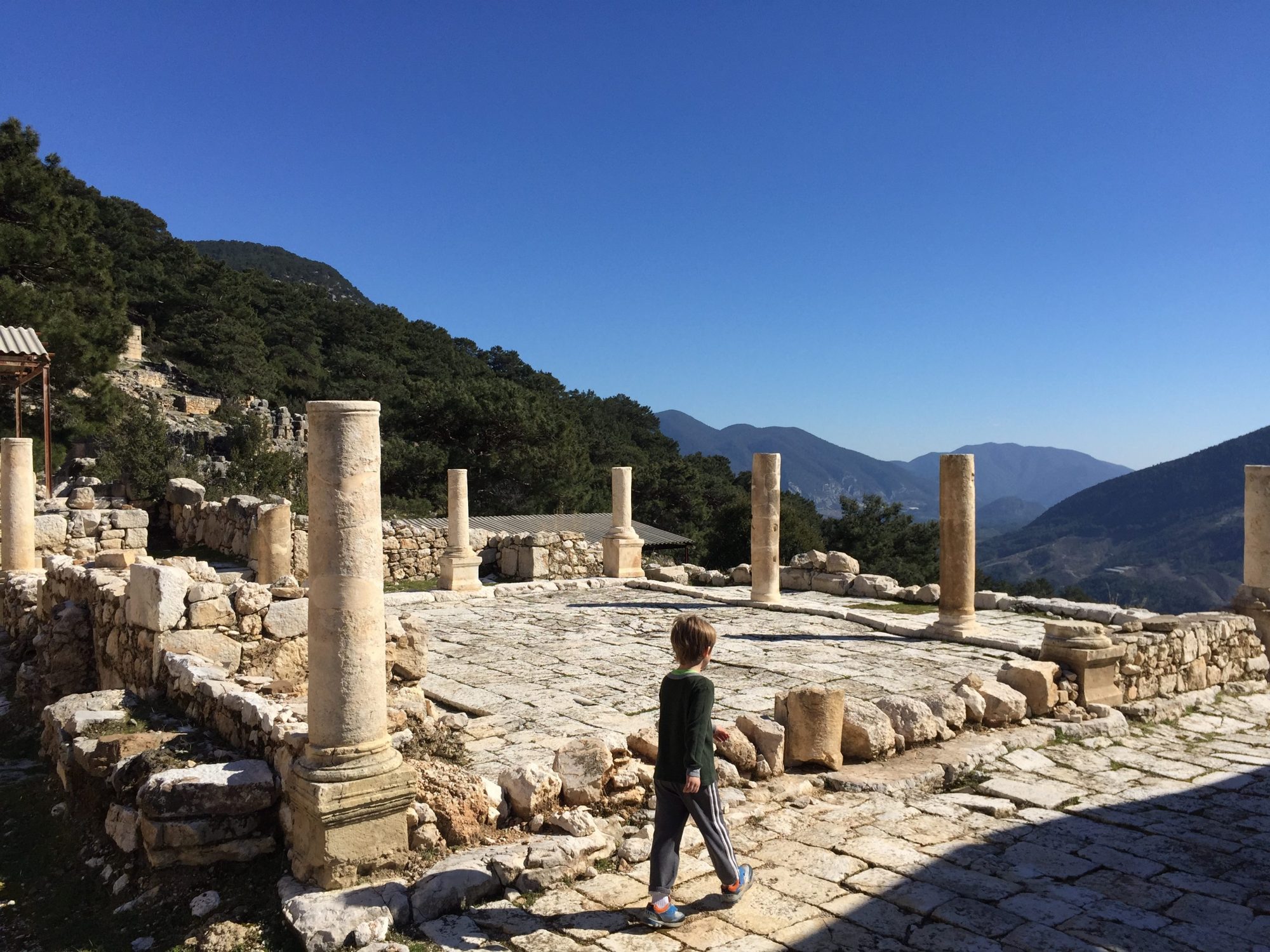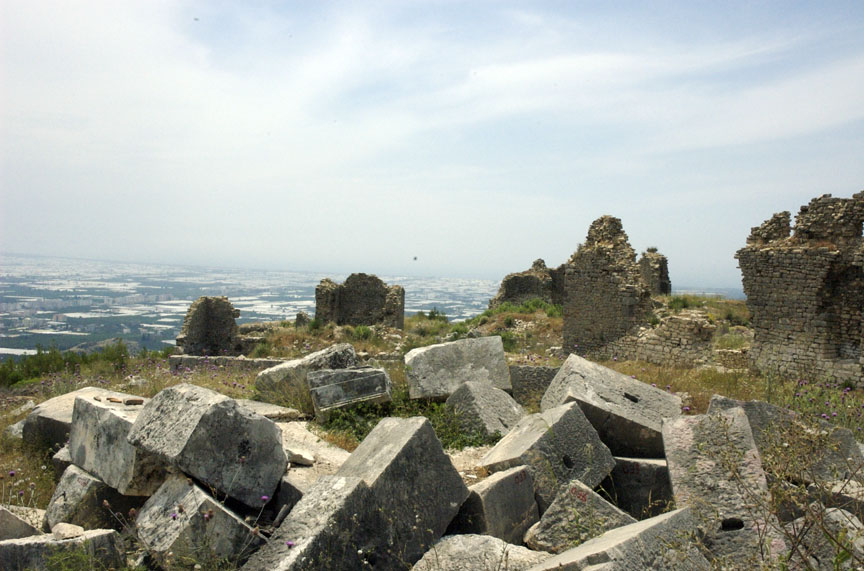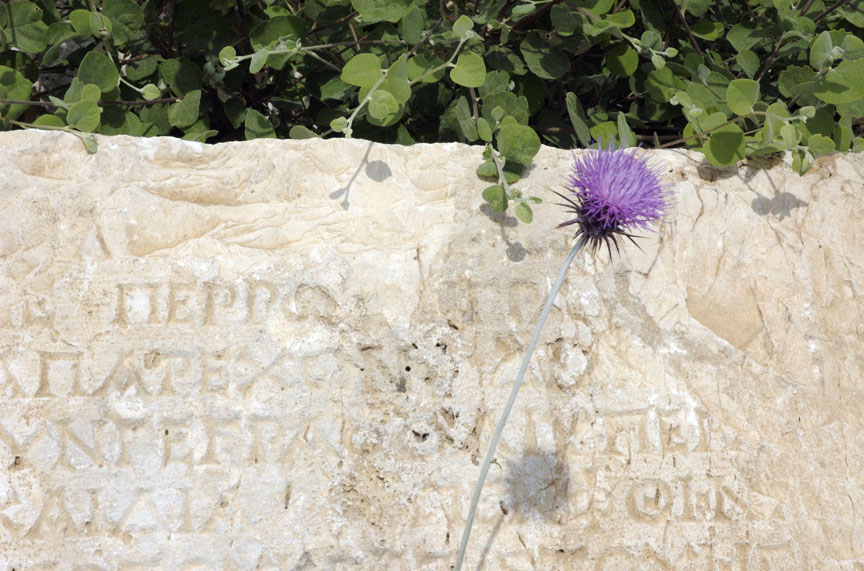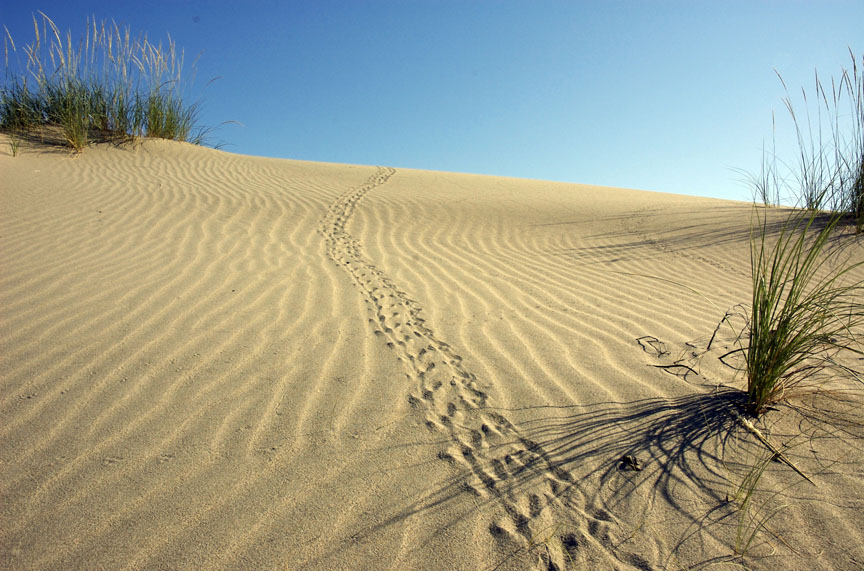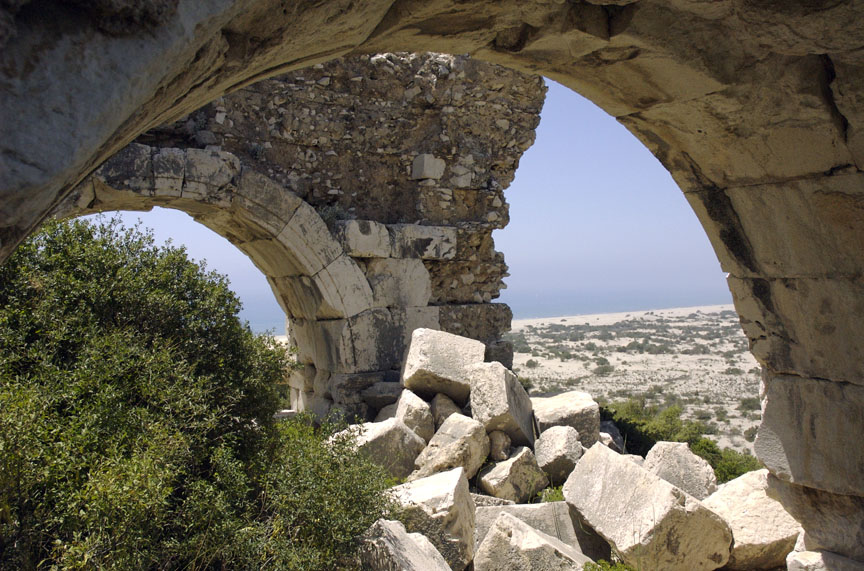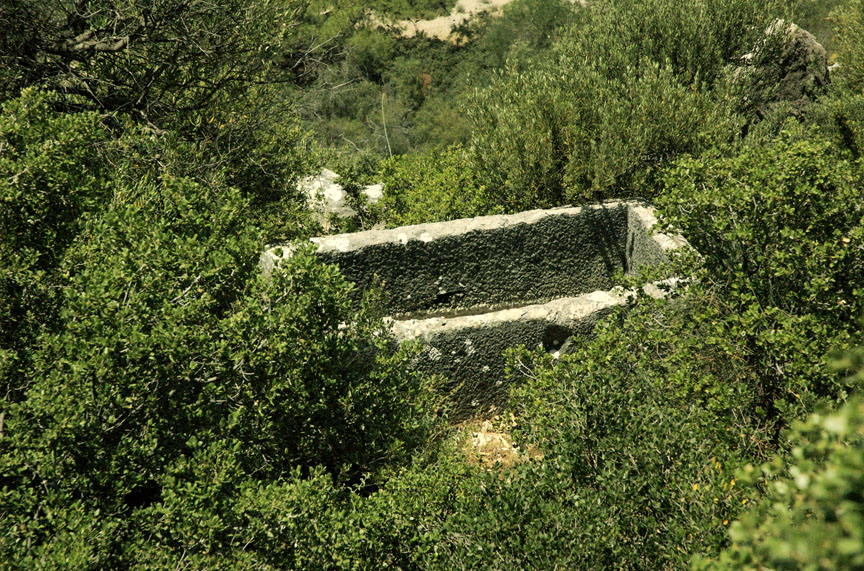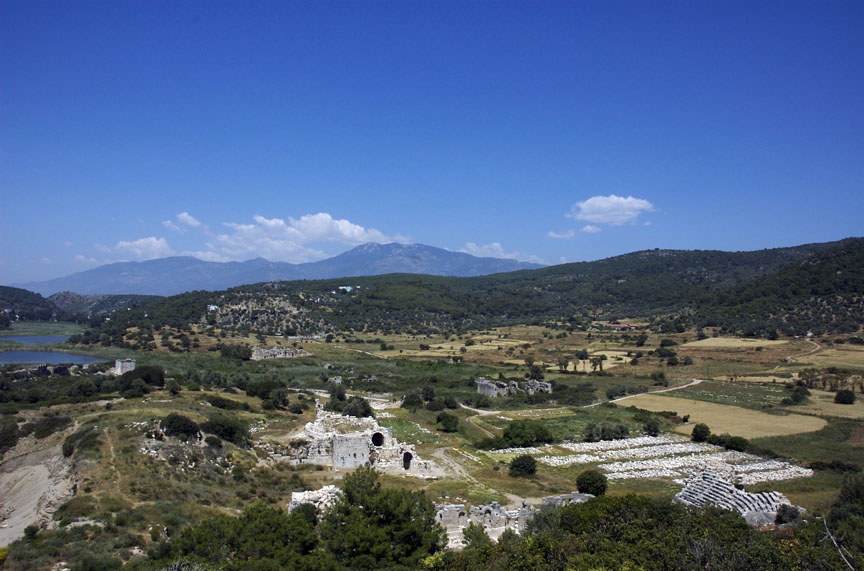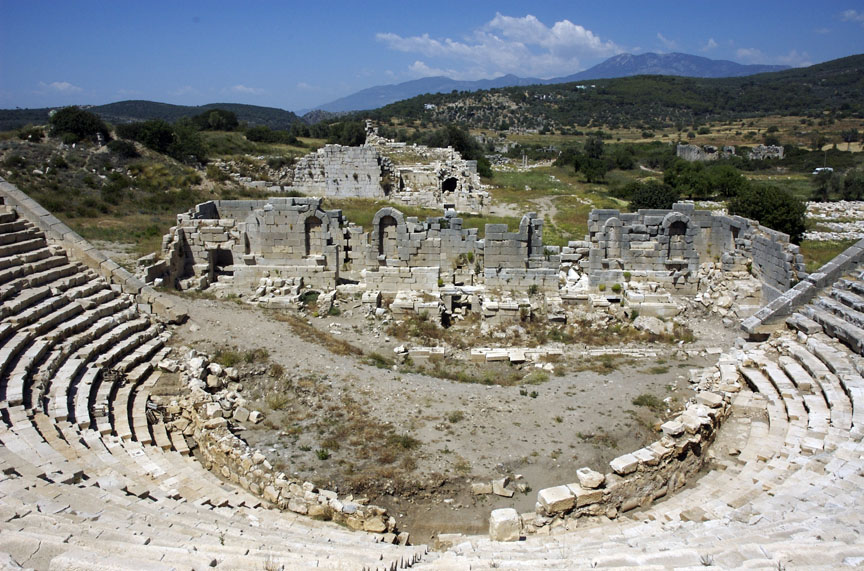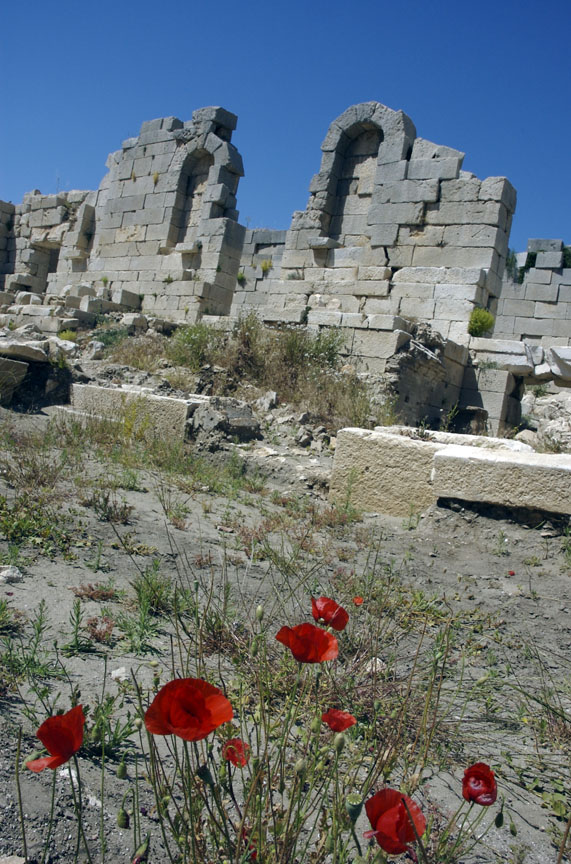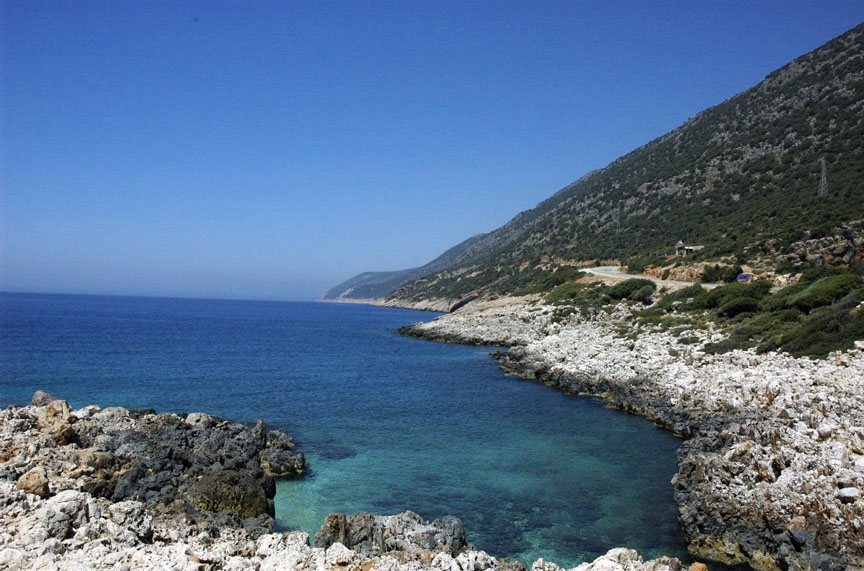Ludingirra’s time is up. And he’s not happy about it.
His friends think it’s funny, though. They laugh at him, snorting over their beers. He shakes his shaggy head regretfully and drags deeply on his cigarette. There’s no way around it: Every Turk is a Soldier.
It’s my last night in Turkey. I’m drinking Efes beer with Dogan and three of his friends on the roof of a club in the Tunel area of Taksim, the hippest part of Istanbul. The first three floors are filled with the young, writhing, and beautiful, who dance and drink and drink and—in the women’s bathroom, at least—puke; the rooftop bar has simple wood tables and a quieter, older crowd. Mind you, it is Friday night, and people are clearly drinking their faces off, but they’re having (perhaps increasingly incoherent) conversations while they’re doing it. Downstairs you can only shout in each other’s ears and then nod as if you actually heard what was said.
Dogan is a computer programmer for a tobacco company who has put me up for a week and seems to know pretty much everybody in Taksim. Ismail is a petroleum engineer and recently diagnosed diabetic. (He pulls out a needle halfway through the night, and as he lifts his shirt, I have to look away.) There’s also old friend of theirs whose name I can’t remember but who has appealingly Mod sideburns and a week ago at the annual Roma music festival kept yelling at me to “be more Turkish”—in other words, to shake my ass; and, of course, Ludingirra, the soon-to-be soldier, who in daily life is a 33-year-old editor of a music magazine. His name isn’t really Ludingirra, but that’s what I’m calling him, for reasons that will become clear later.
This is why Ludingirra’s time is up. If a guy studies for a master’s degree, as this moppet-headed sloucher did, he can delay mandatory service in the Turkish military until he’s 33. (He gets another four years if he’s aiming at a Ph.D.) And then, come hell or highwater, he must serve for up to 15 months. Of the four, Ludingirra is the only one who hasn’t served his required time. (Women can join the army, but they don’t have to.) Many stints aren’t exactly taxing; Ismail, for instance, patrolled Ephesus, a Greek-Roman city that is one of the most popular archaeological sites in Turkey. In Turkey, it’s known as Efes—and thus the inspiration for the beer we’re on round four, or maybe five, of.
There are two places it would suck most to be stationed, and both involve Kurds, the minority population in both Turkey and neighboring Iraq, who have been fighting both governments for decades. The first would be the Turkey-Iraq border, which Turkey wants to cross to follow Kurdish separatists known as the PKK into the historically Kurdish area of Iraq. The other would be Diyarbakir, a mostly Kurdish city in southeast Turkey where separatists and Turkish soldiers have been routinely killing each other—and civilians—and more civilians—since 1984. Tens of thousands have died.
The only pro-Bush person I met anywhere in the world—think about that for a moment—was a Kurd from Diyarbakir. A taxi driver in Istanbul, he was happy Saddam Hussein got his, and everything else be damned.
We had a robust political debate about Bush, language barrier be damned.
Kurdish taxi driver: “George Bush very good! Number one! HA HA HA!”
Me: “No no no! George Bush no good! Hayir [no] George Bush! Hayir!”
Taxi driver: “HA HA HA! Evet [yes] George Bush! Evet! Number one!”
Me: “Hayir George Bush! Very bad!”
Taxi driver: “America best country! HA HA HA!”
Discussing the Kurdish situation brings out, at best, uncomfortable cringing from Istanbul sophisticates, and might get your teeth knocked in (from either pro or anti Kurds) in other parts of the country. Talking about the treatment of Armenians by Ottoman Turkey in the early 20th century is even worse. It’s against the law, in fact.
Turkey is bidding for European Union membership, and two of the major sticking points for some EU member states are Turkey’s record on human rights and freedom of speech. For many writers, these two have neatly—and unfortunately— converged. There are a lot of things you can’t say in Turkey. For instance, it’s illegal to call the deaths of 1.5 million Armenians in 1915 “genocide”; the controversy about whether it was continues today. Nor can you pen something that is “insulting Turkishness.” What is “insulting Turkishness,” exactly? It seems to be defined much as obscenity famously was in 1964 by US Supreme Court Justice Potter Stewart: hard to define, but “I know it when I see it.”
Turkish prosecutors saw it in a Swiss newspaper article in which 2006 Nobel Prize–winning novelist Orhan Pamuk was quoted as saying, “30,000 Kurds and one million Armenians were killed in these lands, and nobody but me dares talk about it.” The charges against Pamuk were dropped in early 2006.
But he’s not the only one to dare to talk about it. The Turkish-Armenian journalist Hrant Dink, given a six-month suspended sentence in 2005 for openly writing about the Armenian controversy, was gunned down outside of his newspaper’s office in Istanbul a year later. Thousands protested. Then novelist Elif Shafak was charged for writing about the same subject. The judge threw her case out in less than an hour. She didn’t testify, as she was busy giving birth at the time the case was heard.
But you don’t have to write about Armenians to be prosecuted for your words. You could try “insulting Muslim women and inciting religious hatred,” as Sumerian archaeologist Muazzez Ilmiye Cig was accused—and promptly cleared—of doing in 2006 when she wrote in a scholarly work that head scarves predate Islam, and were in fact worn by Mesopotamian priestesses who carried on the sacred sexual rites I mentioned in an earlier post. (Incidentally, the 90-something Cig, like a lot of Turks, considered Pamuk’s accusations of Armenian genocide to be untrue. On her website is this obliquely menacing message: “She is a true daughter of Ataturk. She conforms to reforms without concession.”)
Nor must you have a connection to Turkey at all. The only time I saw Dogan—super mellow, incredibly generous, and widely traveled Dogan—look alarmed was when it came to a book, and it wasn’t about Turkey. I was rereading Shalimar the Clown by the recently knighted Salman Rushdie. Much as Midnight’s Children is about the founding of India, Shame the history of Pakistan, and The Moor’s Last Sigh the colonization of India, Shalimar is Rushdie’s take on the Kashmir conflict between India and Pakistan. I was revisiting it because I had now actually been to Kashmir.
Dogan and his girlfriend Anna-Marie were heading out of his apartment to have dinner with friends when he stopped short. He pointed at the book, which was sitting, I thought very innocently, on the coffee table in his living room, where I was cross-legged on the couch with a glass of wine.
“Don’t let anyone see you reading Salman Rushdie,” he said with a small smile. “Satanic Verses is illegal in Turkey. You can’t sell it here.”
I was surprised. I would have thought that in Turkey, where secular humanists and nationalist reactionaries can at least bond on their mutual distaste for religion, watching Rushdie thumb his nose at Mohammed might have been at least diverting. But instead it had been frightening. I’ve haven’t been able to verify that the book is banned in Turkey, but certainly there is precedent for Dogan’s anxiety. Consider what happened in July 1993, in Sivas, a city in central Turkey. Pro-sharia radicals protesting Aziz Nesin, the Turkish translator of Satanic Verses, set fire to the hotel hosting the Pir Sultan Abdal Literary Festival Nesin was attending. They blocked firefighters from dousing the flames. Thirty-seven died. Nesin himself made it out alive.
But I didn’t know about Sivas then. “Wow,” I said. “I had no idea. I have a copy back home. I can send it to you if you want.”
Dogan was nearly tasered by this suggestion. “Oh! No! Oh, no!” He furiously waved his hands, warding off the very idea, as if the novel would be a literary bomb exploding his mailbox and his life. “Oh no, don’t do that. Please, really. You can’t. That is a very bad idea.”
Still, for now, these writers’ works are intact. But for the long haul, for real persistence through time, they may want to consider writing on clay tablets like Ludingirra. I’m not talking about the music magazine editor, at least not specifically. Maybe I’m talking about all writers, including myself; considering how intangible a medium the Internet is, clay seems preferably substantial.
Instead, I’m referring to the 18th century b.c. Sumerian I had dismissed as a Momma’s Boy a week back. Turns out that perhaps I had jumped the gun in that appraisal. He did note for a courier who was sent to Nippur to fetch his mother that the courier would be able to recognize her by her singular qualities:
My mother is like a bright light on the horizon/active in the mountains./A morning star (shining even) at noon/A precious carnelian-stone, a topaz from Marhasi/A treasure from the brother of the king, full of charm…
—and I mean, c’mon. We all love our mothers—I particularly like drinking wine with mine while storm watching from a good porch—but really. What a suck up. Trying to secure our place in the will, are we?
I had floated this theory by Dogan earlier in the week. He enthusiastically informed me I had no clue what I was talking about: “Oh no, Ludingirra is very famous!”
It turns out that Ludingirra wrote an autobiography, a highly unusual thing for 18th century b.c., in which he detailed how the Akkadians, the new sheriffs in town—”town” being Nippur, in what is now southern Iraq—were suppressing Sumerian culture. And we know this because the clay tablets on which he had written his autobiography were translated into Turkish by Cig, the Sumerian archaeologist whose long-view take on the hijab landed her in court.
We’ve had enough beers that when I privately, slowly, and not very logically connect Ludingirra’s inevitable military stint with Sumerian Ludingirra’s complaints about Akkadian oppression, I find myself depressed as hell. Many people like to think of the past—any period, anywhere on this planet—as some sort of Golden Age when the Ancestors Got It Right, and if we could only recapture the Wisdom of the Ancients, then we too could create A Better World. These people are bullshitting themselves so completely that it makes me sad for and angry at every last damned one of us. Sumerian Ludingirra and Turkish Ludingrra can tell you about how the majority routinely crack the skulls of the minority. It’s happened everywhere, in all cultures, at all times. Akkadians and Sumerians. Turks and Kurds. Iraqis and Kurds. The whole damned planet. Its utter predictability in the archaeological record, the present day, and the forseeable future is seriously depressing.
Shit. Maybe I’ve had too much to drink. I’m a lightweight now. I keep these thoughts to myself as we talk about the Pixies; Ludingirra does write about music, after all. I wax rhapsodic about seeing the very last show in the Pixies 2005 reunion tour, at Hammerstein Ballroom in NYC, which is much more fun than dwelling on the Dark Side of Man.
First Dogan decides to leave, and then Mod Sideburns does; Ismail agrees to drive me back to Dogan’s later. Later comes sooner rather than, er, later, and soon enough Ludingirra and I are exchanging contact info. Mine’s easy: I hand him a business card. Ludingirra writes down his name, email address, and magazine’s website on a torn slip of paper. I stash it somewhere.
If he had written it on clay tablet, I might be able to say what his real name was instead of coining with the moniker of a man who’s been dead for 4,000 years. Because that slip of paper disappeared. It won’t turn up, either—not as a crumpled-up bit in my purse, nor a fluttering-to-the-ground scrap from my notebook, nor a drunken scrawl that I won’t be able to decipher months later as Steve looks at me questioningly over my shoulder. (“Picking up men in foreign countries, are we?”) It will just do a vanishing act. Whoosh. Gone. The whole damned night might have never have happened, save for writing it here, in this painfully ephemeral medium.
Because I’d like to know: Will Ludingirra wind up serving at some place like Ephesus or somewhere more like Diyarbakir? Will he be able to bore himself to tears watching fat, sunburned Germans on package tours pose before the rising columns of the library at Ephesus, or will he be forced to help crack heads—or get his own cracked—at the border?
On the drive to Dogan’s, Ismail and I have this exchange:
Me: You work for a petroleum company? Really?
Ismail: Yes, really.
Me: And you’re okay with that?
Ismail: They will get the oil whether I am okay with it or not.
Me: That is true.
